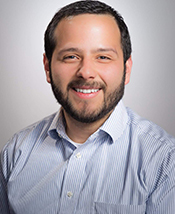About the Author

Arnoldo Cantú, LCSW, is a clinical social worker by training with experience in school social work and community behavioral health. His interests consist of working with children, adolescents, and their families in a clinical capacity. Cantú was born in Mexico and considers Texas home, having grown up in the Rio Grande Valley. He is a doctoral student at Colorado State University with an interest in researching alternatives to the DSM.
References
ADisorder4Everyone. (2020, September 25). AD4E festival - Dr James Davies - The making of DSM. [Video]. YouTube. https://www.youtube.com/watch?v=cKaBW5FaV4U
ADisorder4Everyone. (2022, October 5). The critique of psychiatric diagnosis; Why we need better ways forward – Dr Lucy Johnstone. [Video]. YouTube. https://www.youtube.com/watch?v=PzkAwRl4eIo
American Psychiatric Association. (2022, March 18). Diagnostic and Statistical Manual of Mental Disorders (5th Edition, Text Revision). American Psychiatric Publishing.
Bellafante, F. (2018, March 8). Creating “mental illness” – An interview with Christopher Lane.
Mad in America.
https://www.madinamerica.com/2018/03/creating-mental-illness-interview-christopher-lane/
Carney, J. (2013, May 3). The DSM-5 field trials: Inter-Rater reliability ratings take a nose dive.
Mad in America.
https://www.madinamerica.com/2013/03/the-dsm-5-field-trials-inter-rater-reliability-ratings-take-a-nose-dive/
Centers for Medicare & Medicaid Services. (2015, October 1). Psychiatric diagnostic evaluation and psychotherapy services (l33252). Retrieved July 23, 2022, from https://www.cms.gov/medicare-coverage-database/view/lcd.aspx?lcdId=33252&ver=29
Desantis, G. (n.d.). An introduction to ICD-10 z codes. TenEleven. Retrieved July 23, 2022, from https://10e11.com/blog/an-introduction-to-icd-10-z-codes/
Dewees, M. (2002). Contested landscape. Journal of Progressive Human Services, 13(1), 73–91. https://doi.org/10.1300/j059v13n01_05
Frances, A. J. (2014). Saving normal: An insider’s revolt against out-of-control psychiatric diagnosis, DSM-5, big pharma, and the medicalization of ordinary life. William Morrow Paperbacks.
Frances, A. J., & Jones, K. (2014). Should social workers use diagnostic and statistical manual of mental disorders-5? Research on Social Work Practice, 24(1), 11–12. https://doi.org/10.1177/1049731513507981
Greenberg, G. (2010, December 27). Inside the battle to define mental illness. Wired. https://www.wired.com/2010/12/ff-dsmv/
Insel, T. (2013, April 29). Transforming diagnosis. [Blog]. http://www.nimh.nih.gov/about/director/2013/transforming-diagnosis.shtml.
Johnstone, L. (2022). A straight talking introduction to psychiatric diagnosis (2nd ed.). PCCS Books.
karter, j. (2016, august 22). sociologist explores the dsm-5’s failed attempt at validity. mad in america. https://www.madinamerica.com/2016/08/sociologist-explores-how-the-dsm-5s-attempt-at-validity-failed/
Lacasse, J. R. (2013). After DSM-5: A critical mental health research agenda for the 21st century. Research on Social Work Practice, 24(1), 5–10. https://doi.org/10.1177/1049731513510048
Lacasse, J. R., & Gomory, T. (2003). Is graduate social work education promoting a critical approach to mental health practice? Journal of Social Work Education, 39(3), 383–408. https://doi.org/10.1080/10437797.2003.10779145
Lynch, T. (2018). The validity of the DSM: An overview. The Irish Journal of Counselling and Psychotherapy, 18(2), 5–10.
National Association of Social Workers. (2021). National association of social workers. National Association of Social Workers (NASW). Retrieved September 26, 2021, from https://www.socialworkers.org/About/Ethics/Code-of-Ethics/Code-of-Ethics-English.
Newman, B. S., Dannenfelser, P. L., & Clemmons, V. (2007). The diagnostic and statistical manual of mental disorders in graduate social work education: Then and now. Journal of Social Work Education, 43(2), 297–308. https://doi.org/10.5175/jswe.2007.200600106
Simons, P. (2022, September 5). Influential neuroscientist reviews decades of failure. Mad in America. Retrieved September 18, 2022, from https://www.madinamerica.com/2022/09/influential-neuroscientist-failure/
Spiegel, A. (2004, December 27). The dictionary of disorder. The New Yorker. https://www.newyorker.com/magazine/2005/01/03/the-dictionary-of-disorder
V codes (DSM-5) & Z codes (ICD-10). (2022, November 29). PsychDB. https://www.psychdb.com/teaching/dsm-v-icd-z-codes
Whelan, C. (2022, July 14). How to know if your insurance covers therapy. Healthline. Retrieved July 23, 2022, from https://www.healthline.com/health/does-insurance-cover-therapy